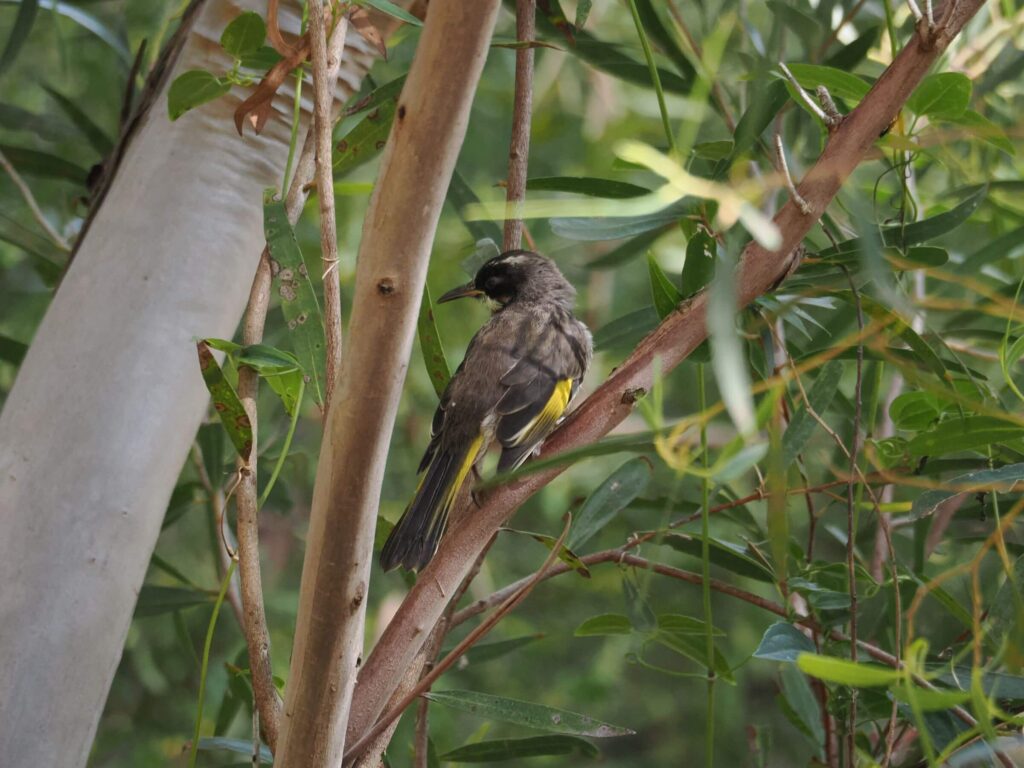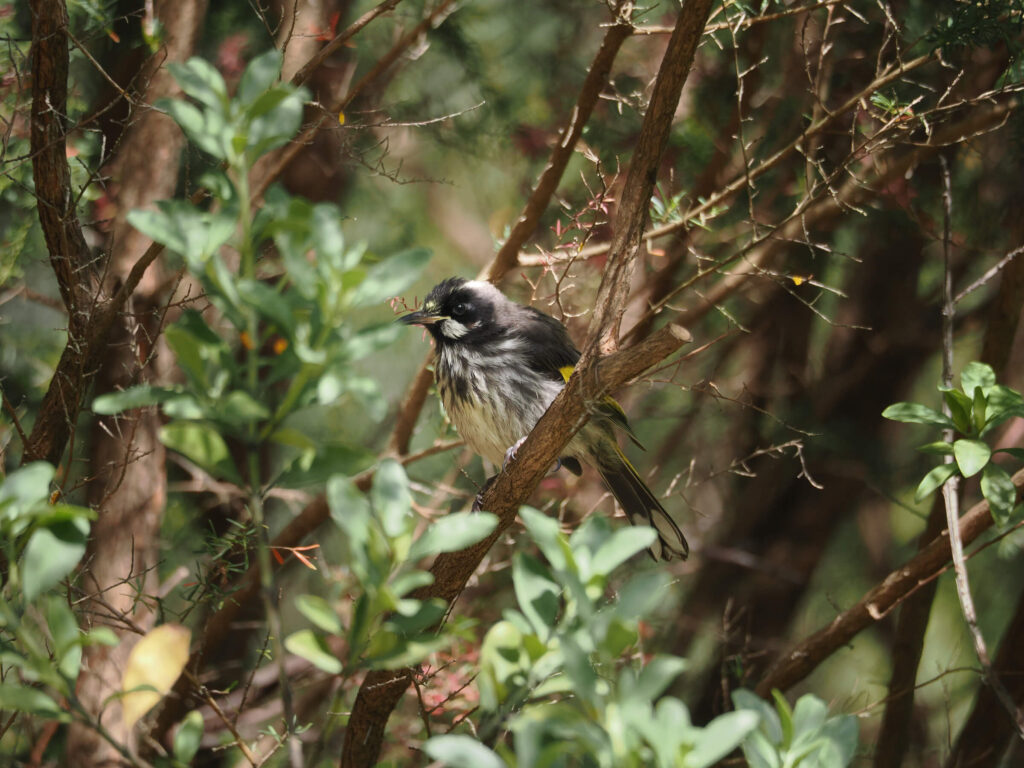Description
The New Holland Honeyeater is a small, energetic bird known for its striking black, white, and yellow plumage. With its slender, curved beak and quick movements, it’s easily recognisable in its natural habitat.
These birds typically measure around 18-21 cm in length, including their tail.
Their colouring is characterized by a black head with white cheek patches, a black-and-white striped body, and vibrant yellow wing panels and tail edges. Their eyes are a striking white, contrasting with their darker features.
Diet
New Holland Honeyeaters primarily feed on nectar from flowering plants, including banksias, grevilleas, and bottlebrushes. They also consume insects, which provide them with additional protein.
Habitat
New Holland Honeyeaters are commonly found in heathlands, woodlands, and gardens, particularly where flowering plants are abundant. They build small, cup-shaped nests in shrubs or low trees, usually hidden among dense foliage.


